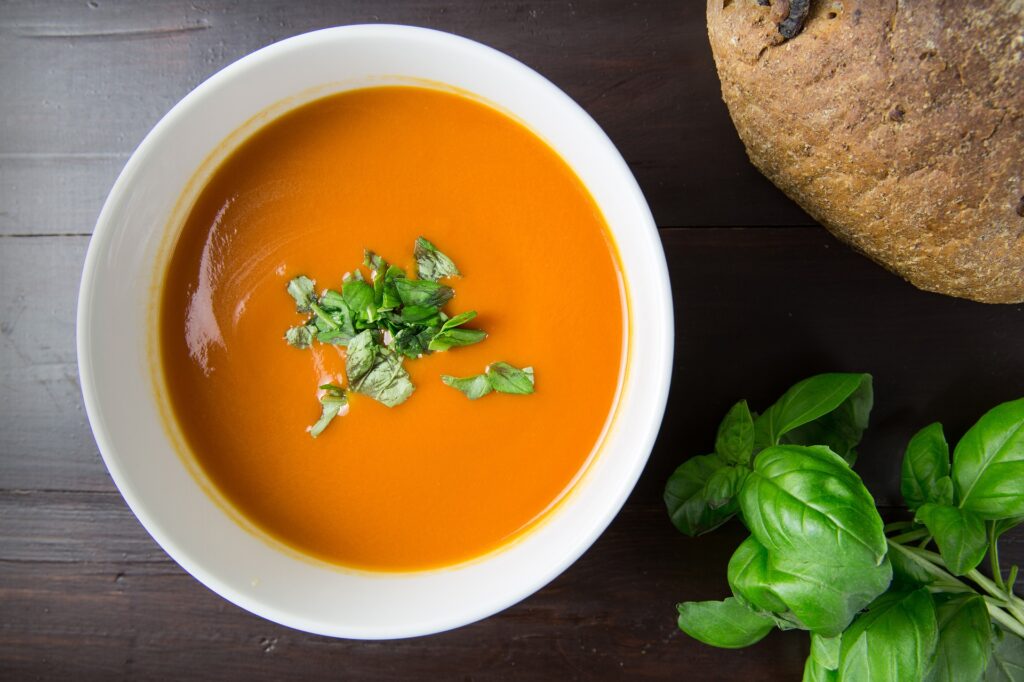Back in September 2021, I was feeling a bit of an ache in my soul.
After more than a year of stripped-down pandemic life, our kids were back to in-person school and some of their extracurriculars (yay) and our family was back to worshipping in-person with our church congregation (yay) and things were feeling a little more “normal,” but something inside of me was still off.
At first, I could only frame my restlessness in terms of how our family feels and functions when we go down to Ebenezer Point. We hadn’t been able to get away to our cabin in a long time. “We need to go to the cabin more! That will solve the problem!”
When we’re at the cabin, we are mostly technology-free. The kids play, read, & relax differently down there. For myself, even though I still cook and do a bit of cleaning, I feel like my blood pressure lowers. I rest at the cabin.
It finally hit me that what I was longing for wasn’t confined to a place (as pretty as it is there, with the sunlight dancing on the lake or with the sound of animals in the woods as night falls).

I was longing for shalom. Peace and calm and contentment.
Making Room for Rest
Multiple books I had read started to coalesce and form a murky vision of what I wanted to create. Maybe create isn’t the best word – I had a dim vision of what I wanted to make room for. I wanted to find a version of Sabbath rest for us, for the time and place and context we’re in.
Three or four years ago, I read Rosaria Butterfield’s The Gospel Comes With a House Key and it absolutely wrecked me. She talks about making big pots of soup every Lord’s Day because it’s so easy to share with a crowd. Her stories of opening her home to church friends and folks in the neighborhood made me want to expand my experience of hospitality. I’ve hosted more folks for meals [with a hiatus during the covid surges in our community, of course] since I read that book than ever before in our adult lives.
During a sermon series and church-wide “technology fast” in 2017 or 2018, I picked up The Tech-Wise Family by Andy Crouch. As he describes the way humans are wired to need both work and rest, he encourages readers to pick a rhythm for their use of technology that allows for one hour a day, one day a week, and one week per year to turn off devices and be more fully present with the Lord and each other.
In 2019, I picked up Finding Holy in the Suburbs. Ashley Hales observes that modern hospitality is often a gospel call to “stay put and start small.” In her list of practical steps, she urges us to start at home and make margin in our time to allow for hospitality. In response to the oft-flung complaint that busyness prevents us from finding shalom or offering hospitality, she writes:
“Our human knee-jerk reaction is to circle the wagons around our plans, to see our days and our time as so scarce that it must be dissected, divvied up, and our plans executed so we can continue on the path to progress. We think we’re responsible for providing for ourselves, and we can’t begin to imagine manna or quail, or how bread and fish could feed five thousand people. We can’t conceive of how our time could be multiplied, that there could be rest after the weary work week…
The upside-down kingdom of God in the suburbs stakes this claim: you don’t have to be busy to belong. When we stop striving, we don’t have to hoard our time or treasure. God’s kingdom testifies that rest is possible, not just checking out from the rat race in your favorite version of suburban leisure, but more than that, we can experience a deep, restorative rest.”
Ashley Hales, Finding Holy in the Suburbs, pp. 53, 57
And then at the end of summer 2021, I bought Welcome Home by The Nester, Myquillyn Smith. She’s a self-proclaimed “cozy minimalist,” and I was intrigued by her book’s focus on how to minimize the “stuff” of holiday and seasonal decoration without losing the coziness and tradition of celebrating the changing seasons.
If you’ve ever been to my house, you know that I am not a minimalist and I love decorating for all the holidays! And yet…
Maybe it was the pandemic life within our four walls for an extended period of time, maybe it was turning 40… I’m not sure what made the difference, but something has been tugging at me to get away from the tyranny of being beholden to my belongings. So I picked up Smith’s book, looking for steps to simplify my decorating.
I never expected it would speak to this feeling — this need to rest and make room for peace and quiet.
Welcome Home is divided by seasons, so I was delighted that the book started with Fall (remember, it was September). In each seasonal section, Smith reminds us that building a home that’s cozy, hospitable, and primed for making precious memories must be grounded in the five senses. I jotted notes as I read through her prompts about the sights, sounds, and smells of autumn… and then I read the paragraphs about taste.
“Soup, chili, stew, casseroles, breads, roasted vegetables, caramel corn, hot cider, and donuts are undeniably fall foods that we are all ready for after summer. Serving seasonal foods is a delicious way to experience the season…”
I put my pen down and sighed. Most of my family doesn’t like soup, I mused.
Maybe if I try some new soup recipes, I could find more than ONE that they’ll all eat.
But if I cook soup too often, they’ll all revolt at the dinner table!
And then it hit me. We’ll try one new soup recipe a week. I’ll call it New Soup Sunday! I can make soup, and try all the cozy calming things — light candles, play soft jazz music — to set a homey mood. And if the kids don’t like the soup, we’ll scratch that off the list and try something different the following week.

What’s Soup Got to Do With It?
At the very least, I hoped, sharing these meals of cozy, hearty, warm soups all autumn long would build in some of the cozy minimalism that Myquillin Smith talked about.
But I had this little glimmer of a notion that this could be more than “the very least.” I had a hunch that maybe this could form a new habit that would create a tiny little pocket of unplugged time that would feel just as restful as our time in the woods.
Or at the very best, this would become an opportunity for hospitality and a counter-cultural observance of Sabbath in a world that’s barking mad for productivity.
And that’s how this whole experiment started. One new soup recipe every week for a season… that turned into a year of Sundays… to help us find rest.
This is Part 1 of a series. You can find Part 2 by clicking here.



